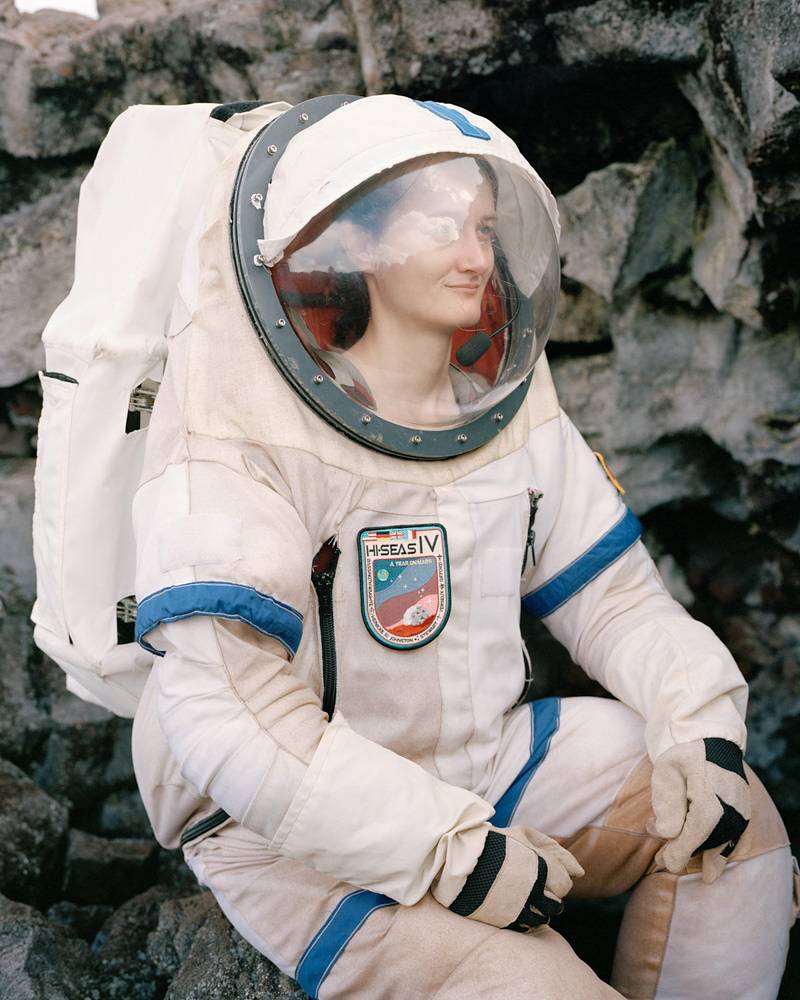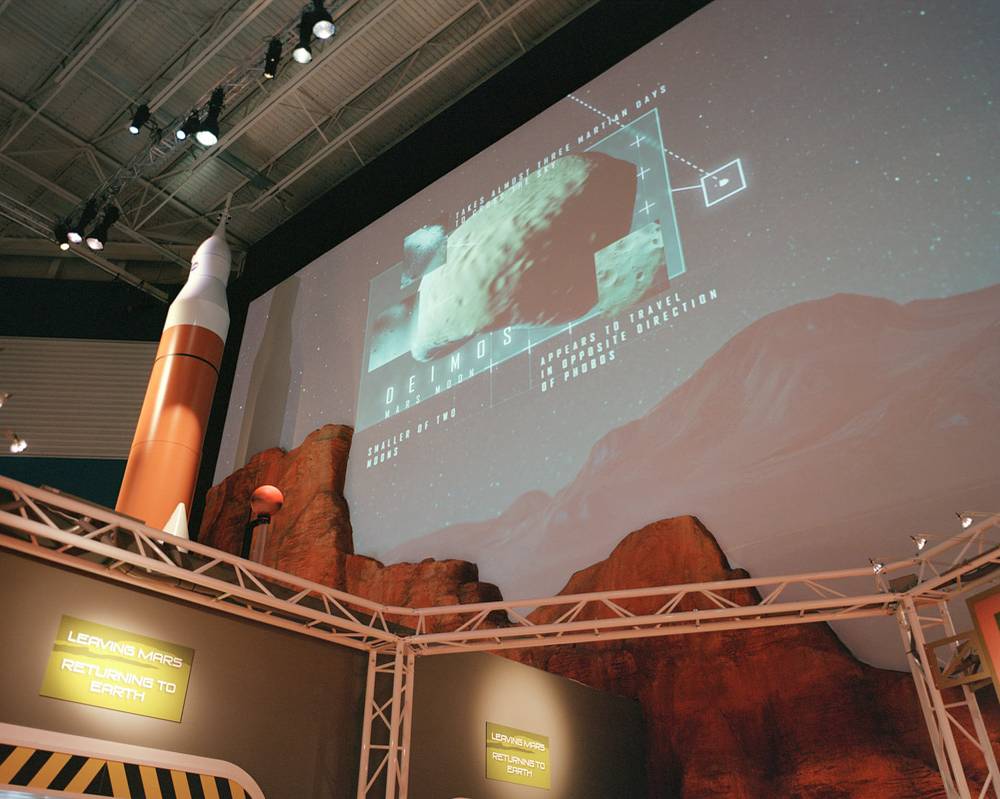Life on Mars — Cassandra Klos' Analogue Space Odyssey
3 17 Share TweetLike many other terrestrial-born travellers, Boston-based photographer Cassandra Klos has always been fascinated by space exploration. Last year, she continued her role as artist-in-residence at the Mars Desert Research Station, and led the first mission of creatives as Commander of Crew 181.
Hungry to know more about potentially habitable planets, Cassandra and a select few individuals were granted access to analogue test sites — areas that are geologically similar to Mars to document and conduct vital field research. The result is a stunning, dual-reality photo series. Besides displaying the heartfelt human bid to explore, Cassandra's series Mars on Earth also shows us that the distant Red Planet is closer than you might think.

Welcome to the Lomography Magazine, Cassandra! Please tell our readers a bit about yourself, and the reasons why you chose to undertake this ambitious photo project.
Hi Lomography! I am a fine art photographer from Boston, Massachusetts and I’m currently displaced in the American South. My interest in space and science fiction stems from a young age. I’ve always been interested in both science and art, but I chose an art career in college.
I have found that being an artist allows you to explore interests far and wide. In 2015, I started researching Mars and space exploration, trying to find some inspiration for a new project. I came across the Hawaii Space Exploration Analog and Simulation (HI-SEAS) and felt like I needed to visit and photograph it. The rest fell into place from there!


For any photographer, ‘‘surreal’’ is perhaps an understatement, but how would you personally describe your shooting experience near a dormant volcano in Hawaii and a remote desert in Utah?
It truly feels as though you’re on another planet. You’re far away from civilization, with miles of crumbling terrain surrounding you from every angle; far away from medical attention, your friends, your family — everything. You feel overwhelmed by just how small you feel next to these ancient boulders and the expansive sky. It makes accessing these places quite tricky (which is what the researchers want — they can’t have tourists visiting!) and shooting can be just as tricky, too.
A good pair of hiking boots (moon boots, maybe?) are required and safety has to come before the shot. One bad footing and my Wista 4x5 camera will be headed down a 40 ft ravine! That being said, these places are also beautiful and extraordinary. I am always excited to be “on Mars” and shooting there feels very humbling.


What made you opt for 4x5 film to capture the series? And what is it about analogue film itself that appeals to you in the digital age?
I find that I am a photographer that really benefits from slowing down. The not-so-instantaneous process of 4x5 really appeals to me. The fact that you might only have 10 sheets of film to get the shot. It makes me become very careful and precise in what I want to photograph. I think it gives me a confidence in what I’m shooting more so than digital, or even 35 mm. And maybe it’s specific to this project for me. I comically understand I am using one of the oldest pieces of technology in a Mars simulation, but maybe they work together for a reason?
Using 4x5 I find is also beneficial for exhibition purposes (though that was more of a happy accident and intentional when I started the project). The ability to print them sharp and large allows them to almost become “portals” to another place, another world. I liked that aspect about large format as well.

We’re dying to know more about the out-of-this-world experience a select few people have felt during these missions: did you speak with any of the crew members who were conducting field research?
I have met and photographed pseudo-astronauts of the HI-SEAS III and IV missions, as well as the Human Exploration Research Analog (HERA) XIII mission. I participated in the 155th and 181st missions at the Mars Desert Research Station, where I was the artist-in-residence from 2015 to 2017. So let’s just say I’ve met a few participants in the last few years!
I think the general consensus is that humans are extremely resilient. We tend to normalize to our surroundings pretty quickly. A day-to-day routine on Earth can easily translate to a day-to-day routine on Mars when you have certain things at your disposal such as books, research, video games, entertainment, a love of cooking, etc. However, we are also SO comfortable with our basic “Earth necessities.” The crew of HI-SEAS IV were so pale after their year-long mission because they hadn’t felt the Sun’s rays on their faces. A lot of food requests from crews after missions are fresh fruit and vegetables, because the freeze-dried food (while plentiful and of great variation) just doesn’t cut it.


And while researchers have made attempts to recreate these Earth necessities, missing your loved ones is a problem they haven’t quite solved yet. In a way, your crew becomes your new family. Much current research existing in Mars simulated environments is about just the types of crew dynamics and personalities that need to exist on a two to three year mission.
On the 181st crew at the Mars Desert Research Station (a two-week mission), my crew and I sought out videos from our loved ones prior to “launch.” Then, we waited until close to the end of the mission when we were really starting to feel irritable and lousy, and watched all the videos together. As someone who worked at a school at the time, I received messages of encouragement from my students! Another crew member received a group message from their whole extended family. Another their husband and cats! It’s little things like this that I think will help morale, but we are far from solving a complete recreation of an Earth life en route to Mars.

What do you think is the prevailing mood that your images carry to the viewer?
I can’t speak for my audience, but I’d like to hope that Mars on Earth reaches peoples’ innate interest in exploration. While the figures, rovers, and habitats may be surrounded by a vastness, there is something thrilling about being the first one being someplace new. You know, one of the inspirations I spiral back to while making this project are the photographs of Frank Hurley and the first Antarctic expeditions. When those photographs were brought back to the mainland, they were able to give a profound new perspective of a place that was not heavily explored. I hope Mars on Earth can do something similar.



We read about the fortuitous backstory of your stunning long exposure shot. Can you tell our readers how it came about and what makes it special to you?
Hah! Yes, that’s a good story. My image — Nightly Patrol — was shot during my last night of the 155th mission at the Mars Desert Research Station. There is only night between one crew leaving the Habitat and the next crew moving in — it’s called “Switchover Day”, and it gives both crews the ability to share information about the Habitat. During this day, simulation rules are lax.
I decided I’d like to try to get one last long exposure of the MDRS Habitat before I left, so I set up my 4x5 camera with the shutter open and walked back into the Hab for about 30 minutes. To retrieve my camera in the pitch darkness, I asked my executive officer, Jackelynne Silva-Martinez, to come with. With flashlights in hand, we headed out to locate my tripod when we suddenly heard voices. After spending two-weeks in the desolate Utah desert, the last thing you think you’d hear is other people. The voices spooked us and suddenly we were screaming bloody murder back to the Habitat! We soon found out that it was a couple members of the 156th crew that didn’t alert us that they would be doing some camping and stargazing.
When all crewmembers were accounted for, I went back out, found my camera and finished the exposure. When I got my film back, I realized I had captured the whole event — light trails from our flashlights dance around the Habitat while the 156 crewmembers illuminate the (then) science lab. It ended up being one of my favorite shots from the project because of the story that encapsulates it.

We’re curious, what’s your opinion of the people who’ve signed up to Mars One — the organisation that aims to establish permanent human settlement on Mars — which has already received hundreds of thousands of applicants for a one-way ticket?
That’s a great question. I can’t say I have much of an opinion on the organization at the present time. While an interesting concept, Mars One hasn’t gained much traction in recent years and I’m not sure how significant the endeavors of the project will be in the future. The idea of humans signing up for a one-way trip is quite fascinating, however the rationale of leaving Earth behind for good seems a little daunting to me! I think what Mars One shows is an accumulation of peoples’ innate need for exploration at the very least!
How does it make you feel when you hear that NASA aims to send humans to Mars in the 2030s?
I am so excited by the idea and I can’t wait to see everything unfold in the next 10, 20, 30 years! They say that the first person to walk on Mars has already been born! I have always committed that this project won’t fully be completed until someone steps on the surface of Mars. I hope to see it in my lifetime. I would absolutely consider travelling to Mars, but you’ll find me waiting for the express route! Right now, predicted manned Mars missions will be at least 3 years (9 months each direction, with the best rotations of planets; and then another year for habituation and exploration). I think researching and participating in simulations and Mars analogs has given me a much better idea of what I’d need to bring with me — maybe a big stack of books, an infinite Netflix catalog, photographs of my family, my dog, and some camera equipment. ;)
How do you feel when you look back over your Mars on Earth archive? And what do you think the implications are: do you think your project will encourage more people to question the limits of human exploration?
Well, I wouldn’t be a true artist if I wasn’t constantly second-guessing my work! I guess I would say that I feel like there is so much more to be said. I am oversaturated with information of Mars in the news — when it’s closest to Earth, whether there’s water there, what is going on with that dust storm — that I hope I am accurately describing this endeavor us humans have decided to launch on. I truly hope that the images spark something in people to take an in interest human exploration.

Finally, what’s coming up for you in the future? Any exciting projects we should know about?
Mars on Earth will be headed to Lago, Nigeria in the Lagos International Photo Festival this fall! You can also see part of it at the New England FENCE, the largest public photo exhibition in North America.
As for me, I’ll be in North Carolina for the next two years as I pursue my MFA in Duke University’s Experimental and Documentary Arts program. I can’t wait to make new photographs, explore new mediums, and research new topics while I’m there.
If you'd like to see more of Cassandra's incredible work, head over to her website.













3 個留言